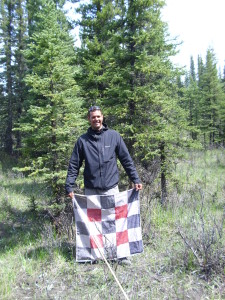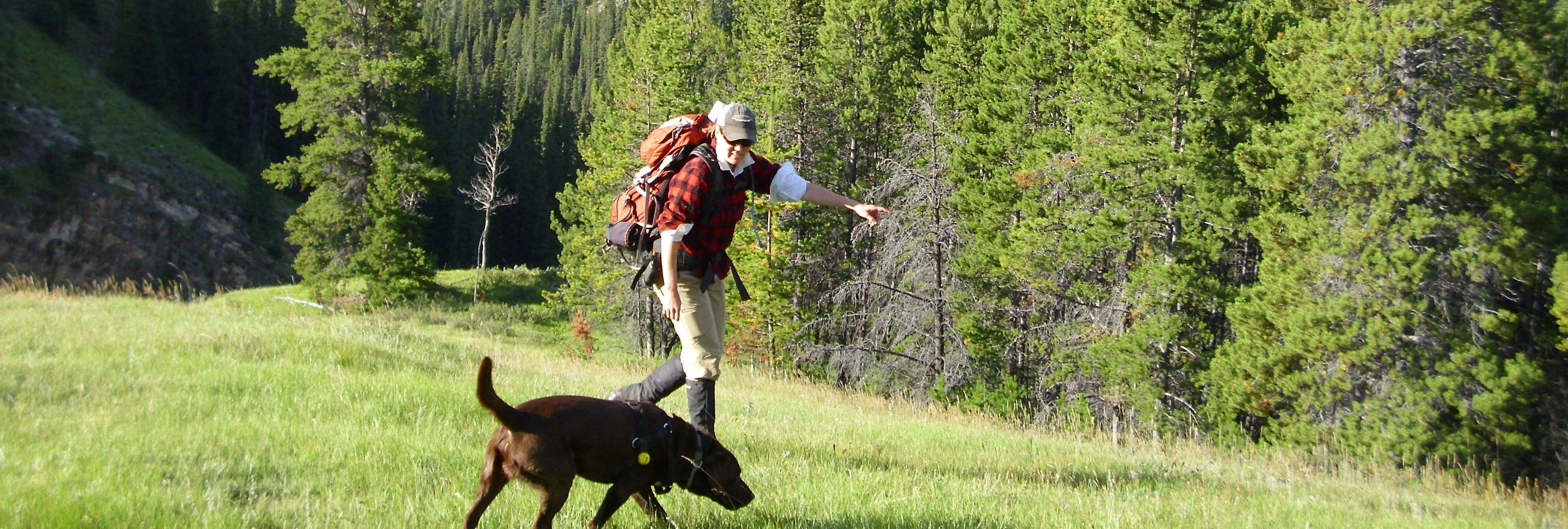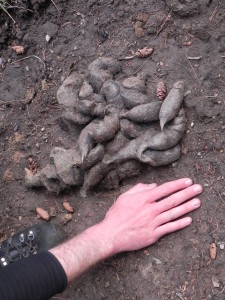With only 8% of the calves alive at the end of the winter 2013 and a high pregnancy rate of 85-95%, we can legitimately wonder: What happens to the calves?
Assuming that predation is the most important factor of calf mortality: where do female elk go on the landscape to give birth, how do they choose where to hide their calves, and how do they avoid predation, while meeting nutritional requirements? Not only is the current project aiming to describe causes of calf mortality, but it also intends to determine the role of habitat in calf survival.
In summer, the Ya Ha Tinda elk herd splits into three main groups. About half of the herd summers on the ranch while another ~10% goes west into Banff National Park and ~40% heads east of the ranch. This eastern migration is relatively recent. Elk likely follow the new grass produced by fresh clear cuts and/or burns out east, or they may be taking advantage of refuge from predation as a result of higher human activity levels. Preliminary results of this pilot year show that eastern calves have a higher survival rate than that of residents. In September 2013, 40% of the eastern calves were still alive while only 20% of the residents made it through the summer.
Elk calves are hiders not followers (e.g., caribou). Once they are born they hide for about a week to 10 days while their mums graze and rest. They are highly vulnerable to predators during this period. They do not move and are camouflaged in the vegetation. How cows select their birth sites, where calves are hidden, and where they go once the calf follows is likely critical to their survival.
From very dense forests to open grasslands, elk appear to give birth in very heterogeneous landscapes. We visited each birth site and/or hiding site and examined them post-capture to quantify characteristics such as the amount of hiding cover available. Was it easy for a predator to spot the calf from a distance? Which calves were preyed upon? Which ones survived? Are the ones that survived the ones that are carefully hidden, the ones close to human activity, or the ones with difficult access? The next few years of the project should bring some answers to these questions.
We would expect pregnant cows to give birth where predation risk is lower. Ya Ha Tinda resident elk are habituated to human activity and predators tend to avoid humans in daylight. As a result, cows might use anthropogenic infrastructure, such as the ranch, as protection from calf predation.
As you have probably now realized, understanding calf survival is multi-factorial and relies on the interactions of many environmental factors. Because our pilot year’s sample size was small, we cannot draw any definitive conclusions as of yet.
But stay posted, time flies and it won’t be long before spring is back!





